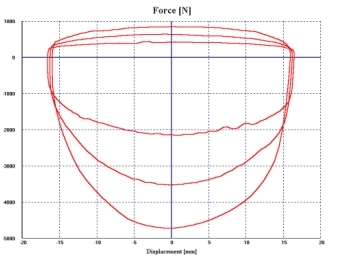Yes! I know nowadays important racing teams have post rigs and stuff, maybe even they are applying CFD to hydraulic/gas dampers design and tunning, too.
But down here there are still newbies like me or DIY racers that want to know more about the ways to engineer your own dampers, using very limited resources like a damper dynamometer and the will and time to work.
I guess the first (and bold?) step would be to make a simple 1/4 car model, where we will input motion ratios, suspension geometries, masses, hopefully a guess of tyre stifness and we will have an initial aproximation of the damping curves we want to have, hopefully aided by longitudinal and lateral accelerations measured by a datalogger that could help us to imagine how fast does the weight transfers occur.
Just then we could go to a dyno to try to get what we want.
But there are other things to consider!
In the dyno curves, wich graph do we have to pay attention to and for what?
These are some examples of what we can see in some machines:

Then there are other (the mechanical) considerations we have to consider. What about hysteresis, dry and fluid frictions contribution, gas preloads, temperature build up, oil seals, etc.
I let the thread for all of you to give and take, but please try not to fill it with Red Bull dampers in Q3 speculations, magneto rheological witchcrafts, Mosley´s m...ass damping or why did Alonso and Hamilton fight each other over Schumacher´s girlfrien Corinna, yes, the ex of Heinz Harald. Keep it real guys







